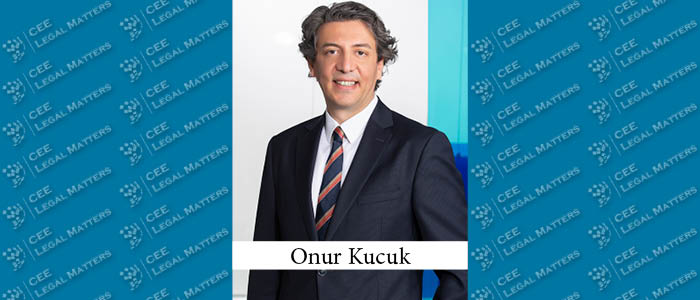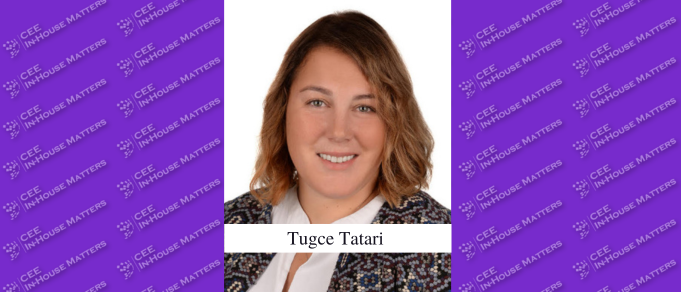Would you ever want to see digitally, Istanbul waking up to a rainy and gloomy day, an alien race that came to visit our species from a galaxy billion light year away, New York City under the post-apocalyptic acid rain, a peanut with a micro-scale civilization on it, the realistic portraits of people who actually never existed and no matter how far you go in the horizons of your imagination, a concrete and visual reflection of all your ideas?
In fact, we are talking about images that is successful enough to make you want to congratulate the artist deep down inside. Some of these images were even featured on the covers of prestigious magazines and prints such as The Economist and Cosmopolitan and one of them even won an award in the fine art competition of the Colorado State Fair in the USA. However, we need to point out that, contrary to all your expectations, the creators of these images are not humans but artificial intelligence programs!
When we talk about the existence of artificial intelligence algorithms that can create a visual response to every meaningful or absurd idea that sparks in your mind, we can easily guess that you will find it scary and fascinating at the same time. From a visual arts perspective, these artificial intelligence programs represent a very important reflection of the point reached by machine learning systems designed on artificial neural networks. Furthermore, all you have to do is insert the idea of “a little girl watching the world from above the clouds” into an artificial intelligence program such as DALL-E, Stable Diffusion, Craiyon, Midjourney, which create images from textual descriptions, and then sit back and wait for the visual results that will be produced by the AI in seconds.
Although we think that these artificial intelligence algorithms, which create interesting images by using only words and word lists that you entered as a prompt, will help you to have a wonderful time, this is not their only function. Because such artificial intelligence programs offer very useful and inspiring opportunities for artists, illustrators, designers and many more. In this context, as in every situation where artificial intelligence touches our lives, creates benefits, and carries a risk of material or moral damage, all eyes are on the matter regarding the legal personality of AI. Therefore, debates on whether artificial intelligence can be an owner of the intellectual and artistic works and whether these images created by AI can be qualified as an "intellectual and artistic work" come to the fore. Therefore, it will be useful to examine some of the matters that may come to mind from the perspective of positive law.
Is it possible to qualify an image created by AI as an “intellectual and artistic work” and make this image benefit from the legal protection provided for the "works"?
In order for an intellectual product to benefit from the legal protection provided to works, it must carry the qualification of a "work". In this regard, certain conditions for being considered as a “work” are stipulated in Law on Intellectual and Artistic Works No. 5846 (referred to as “FSEK” or “Law”) and all of these conditions must be fulfilled.
First of all, the created intellectual product must fall into one of the categories of "works", which are counted as a limited number (“numerus clausus”) in the Law. This condition is referred to as the "objective condition" in the doctrine. FSEK lists the categories of work as "literary and scientific works", "musical works", "works of fine arts" and "cinematographic works". In addition to these four categories, works created by benefiting from another existing work, which are not completely independent from the original work, but also carry the originality of its artist, are described as "adaptations". There is no hesitation that the images created by artificial intelligence will be considered in the category of "works of fine arts". Intellectual productions that can be counted in the category of works of fine art in accordance with Article 4 of the FSEK are specified as examples, and pursuant to this article "all kinds of paintings and graphic works that have aesthetic value are works of fine art".
Another condition in order for being counted as a work is the “forming condition” and it means that the intellectual product must take shape, come into existence and become perceptible by people. In this context, for the formation, it is enough for a work to take place only once and this formation does not have to be continuous. With this condition, it is meant to be explained that a mere thought and idea that has not actually been eventualized cannot benefit from the legal protection envisaged under the FSEK. It is seen that the forming condition has been fulfilled in terms of AI-created images. The aforementioned digital images produced with AI programs are seen and perceived by people, uploaded to their computers, even used as paintings and magazine covers and gain existence with these ways.
The last condition for being counted as a work is "having the characteristics of the author," and this condition is expressed as "subjective condition" in the doctrine. As a matter of fact, in paragraph "a" of Article 1/B of FSEK, the work is defined as "the intellectual product that carries the characteristics of its author". Although "carrying the characteristics of its author" sounds indefinite and subjective, it means that the relevant product must reflect its author's creative side, originality, innovation, style and expression. Therefore, it becomes an essential condition for product to reflect the characteristics of the author to be considered as "work". However, the subjective condition does not mean that the work should be completely unique and one of a kind and not have any reflections from other author's works. Because, while creating their artistic identities and styles, there is huge a possibility that the authors to be influenced by other works they have seen, read and listened to before, and they unconsciously carry parts of them. The important thing is that this influence should not be an imitation, duplication or copying.
The condition regarding the “characteristics” needs to be evaluated separately for each concrete event and the type of work. In a possible dispute brought before the court, expert examination is often required for the analysis of whether the relevant intellectual product carries the characteristics of the author.
In this context, whether the subjective condition is fulfilled in terms of images created by artificial intelligence is the main point to be examined. If we accept that the subjective condition is fulfilled because it has the characteristics of its owner, we will conclude that the aforementioned type of images created with artificial intelligence can be considered as "works" and in this context, they will benefit from the legal protection given to the works. For now, we leave aside the debate whether artificial intelligence can be the author of a work and focus on whether people fulfill the condition of "carrying the characteristics of the author" in terms of images created AI.
In the doctrine, a dual distinction is made between "computer-generated" and "computer-aided products" in terms of evaluating intellectual products created by computer as works. In this context, intellectual products that are purely computer-generated are not accepted as works because they lack human effort and creativity, while those that are computer-aided can be qualified as works on the condition that they carry the characteristics of the author. However, although this dual distinction made in the doctrine is meaningful for classical computers, unfortunately it becomes dysfunctional for artificial intelligence, which becomes more autonomous day by day, develops itself with new data and whose visual outputs cannot be predicted beforehand.
As a matter of fact, with a simple example, when we give the idea of “a little girl watching the world from above the clouds” for the second time to the AI bot named Midjourney, the image it creates is different from the first one. It is seen that in the course of time, the visual outputs in Midjourney's database have increased with each command given by the users and Midjourney started to interpret the same commands differently since it changed and developed itself with the new data it pulls over the internet. In this regard, no matter how detailed the command is written, the image that will be generated by Midjourney cannot be fully predicted by the user. With each passing second, Midjourney can perceive the words “cloud” and “little girl” differently and associate them with each other in different ways.
Therefore, we can say that the condition of "carrying the characteristics of the author" is not fulfilled in the images created with this kind of AI which transforms words and sentences into images, and therefore they cannot be qualified as works. It is not possible to fully predict or control the visual that will be created with artificial intelligence, neither by the programmer nor the user, and in this respect, it cannot be said that it reflects the unique style, creativity, and innovation of the author. In this direction, we can say that these images that do not meet the conditions of being a "work" cannot benefit from the legal protection provided to the works within the scope of FSEK.
So who can be the “author” of a visual output created by artificial intelligence programs?
First of all, we should state that, according to FSEK article 8/1, “the author of a work is the one who created it”. In the doctrine and Supreme Court decisions, it is accepted that the author of a work can only be a real person and legal persons cannot be the author of a work. In this respect, legal persons can only have financial rights related to the work.
From the moment the work is created, the person who created the work gains the title of "author" without the need for any additional legal action and he/she becomes the owner of the financial and moral rights granted to the owner of the work under the FSEK. However, as it can be understood, before evaluating who is the author of a work, there must be a "work" that has fulfilled all the conditions of its legal definition. In other words, it is not possible to discuss the authorship of a work without an actual work.
We have said that images created by AI programs such as Midjourney, DALL-E, Stable Diffusion, and Craiyon cannot be qualified as works because they are not capable of fulfilling the subjective condition. However, even if we produce works that have the characteristics of its author by using a hypothetical AI program with different qualifications from those counted above, the issue of how to determine the authorship of the intellectual product is still quite complicated. Many actors, such as those who develop artificial intelligence software, those who invest in artificial intelligence technology, and users, play a role in the creation of the intellectual product. But which of these people should be recognized as the author of the intellectual product?
In this context, first of all, it can be argued that the products created with artificial intelligence should belong to the public. However, this suggestion comes with important certain disadvantages. Because in the doctrine, it is accepted that the main purpose of providing legal protection to intellectual property products is to support the development of science and art. Within the scope of this argument, companies that produce and develop artificial intelligence technologies will not be able to profit from the intellectual property products created by AI and therefore they will not want to invest in these technologies. However, in recent years, so many successful images created with AI programs and it has been paid so much for these images. For instance, the portrait of Edmond Belamy, created by using an artificial intelligence technology known as GAN (Generative Adversarial Networks), was sold at Christie's auction house for 432,000 dollars. In the event that the ideas and works created by AI belong to the public, it seems that it will not be possible for humans to compete with artificial intelligence technology, since everyone can use it without making a payment.
As another suggestion, it can be argued that the software developer of the AI should be entitled. Since the AI is actually a software in its essence, it is possible to protect AI as a work within the scope of the relevant law by placing it in the "computer program" category stipulated in Article 2/1 of the FSEK. However we should point out that, protecting the AI itself and protecting the intellectual products created by that AI are two different things. If we consider AI as a computer program and consider it in the category of literary and scientific works, the author will be those who develop artificial intelligence software. However, we cannot say that those who have rights on artificial intelligence as its author also have rights on the intellectual products created by AI. Because unlike traditional software, artificial intelligence can renew and develop itself without the intervention of the software developer, and can produce unpredictable intellectual products.
In addition to these suggestions, the discussion of granting legal personality to artificial intelligences, which show a completely autonomous structure and can create visual outputs without the intervention of anyone else, may come to the fore. If we give legal personality to fully autonomous artificial intelligence, even the artificial intelligence itself can claim authorship on the images that is qualified as work. However, if we give AI a legal personality and make it the subject of rights and obligations, some problems related to the authorship of AI inevitably come with it. In case of violation of intellectual rights, it is necessary to clarify how the AI will be a party to a possible lawsuit and how the demands will be met. On the other hand, the matters such as how AI will be able to transfer its rights arising from authorship and how it will be able to conclude contracts regarding the transfer of rights needs to be clarified. Because if we accept that AI is the author of the work, we will conclude that the relevant intellectual product cannot be used unless the AI transfers its rights regarding the work.
With the technological developments of our age, the issue of the legal status of artificial intelligence will inevitably be on the agenda and will confront us with the necessity of answering relevant questions.
For now, we will witness with great curiosity how artificial intelligence technology can affect people's perception regarding the concept of art, and how it will change art’s definition.
As stated by Richard Lloyd: "There will be human art, there will be artificial intelligence art, but there will also be a hybrid. I think human artists will be working side by side with this algorithm and creating hybrid art. It's just the beginning and it's so fascinating what is going to be created".
If you are wondering how the idea of “a little girl watching the world from above the clouds” is interpreted by the AI bot named Midjourney after you complete reading this article, you can see her below. She continues to watch the world of humans as if saying that in the near future designed by technology, artificial intelligence will take its place in the art market as a very inspiring actor.
By Onur Kucuk, Managing Partner, KP Law













